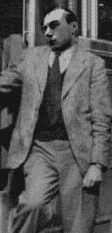 |
|
|||||||||||||||
joseph kelly and the deep structure of techno
Joseph Kelly was a maverick scientist who, 40 years before the development of computer devices capable of processing musical sounds, first posited the idea that all music is techno, and began to seek formulae that would allow him to calculate the techno within different kinds of music. His vision was that Science would expose the deep structure of all music, and would thus be able to derive new and theoretically perfect musical forms.  Joseph Kelly's Tree of Techno diagram (enlarged to show genres of music developed after Kelly's death) Kelly was also a pioneer of having a crafty toke as an alternative to getting violently pissed up on lager, but in the repressive climate of 20th century Britain he was persecuted for his beliefs and his lifestyle. This ultimately resulted in his tragic suicide in the cells of Lewisham Police Station in 1963, and Kelly did not live to see his dream realised.  An excerpt from the details of Kelly's original paper on the Grand Unified Theory of All Techno, 1957 The legacy of his work, however, lived on. Kelly's genius inspired a generation of students who, with access to vastly superior research tools, fast computers, and skunk, were able to work out the details of the formulae which Kelly had sketched in the 1950s and 60s - and, crucially, to apply them to real music in real time.
|
 Joseph Kelly at Cambridge, where he first developed his Grand Unified Theory of All Techno. Photograph taken in 1951. |
|
| back | research home | ||
| home | news | collections | research | about the museum | sponsors | | ||
| powered by Nrgflow | home about collections research sponsors forums shop donations contact education |